 (On the trailer ride into the Cheetah enclosure: Round the outside - Cal (with bottle!), Maria, Sam, Jane, Numpty, Badge, Sami, Kes, Ness, Josh, Nick, Sheena, Emma and half of Alex. Inside – Brock, Sianeidh, Nicki, Sam, Lou and Clodagh. (Kate, Ed, me and Debbie are behind the camera).)
(On the trailer ride into the Cheetah enclosure: Round the outside - Cal (with bottle!), Maria, Sam, Jane, Numpty, Badge, Sami, Kes, Ness, Josh, Nick, Sheena, Emma and half of Alex. Inside – Brock, Sianeidh, Nicki, Sam, Lou and Clodagh. (Kate, Ed, me and Debbie are behind the camera).)After Etosha, the next highlight in Namibia was Cheetah Park. On the way though, we had another roadside bushcamp.

Bushcamping is a necessary, but not necessarily loved, part of the Africa trip. It's great fun to camp in the middle of nowhere, have dinner and then sit in a big group round a bonfire with a few tins.
(Right: finger lickin' good. The Cheetah is the big cat that's kinda like a small cat.)
Cheetah Park was once a working farm run by a white Namibian family. As was – and often still is – the norm, farmers in Namibia shoot Cheetahs in order to protect their livestock. One day, after shooting a Cheetah on their land, the family discovered that the Cheetah had three small cubs. Rather than letting the cubs die, the family took them home and reared them themselves.
letting the cubs die, the family took them home and reared them themselves.
Since then, they have taken in a number of Cheetahs (they have around a dozen adults at the moment) over the years, which they have recovered from other farms. They have converted their farmland into extensive enclosures where the Cheetahs live.
It’s quite a different prospect to Antelope Park in Zimbabwe, where there is an expectation that lions will be returned to the wild. Nevertheless, I think they are doing some good. For the Cheetahs they save there probably isn’t a better option available.
When we arrived at the park, we ‘met’ the domesticated Cheetahs and got our photos taken with them. This didn’t have the same impact as the lion walk or lion cub viewing. I couldn’t help but feel that a domesticated Cheetah is something less than 100% Cheetah. Nevertheless, they are beautiful animals. Very graceful, they appear even slimmer up close. The only slightly less attractive feature is their heads, which really look too small for their bodies.
 The Cheetah feeding in the afternoon was much more thrilling and showed the Cheetahs in something closer to their natural habitat. The group all piled into a trailer, which
The Cheetah feeding in the afternoon was much more thrilling and showed the Cheetahs in something closer to their natural habitat. The group all piled into a trailer, which  was towed into the huge enclosure.
was towed into the huge enclosure.
After a while Cheetahs started to emerge, until there were ten all around the trailer, waiting to be fed. There followed much prowling, purring and mewing, after which, chunks of (horse?) meat were thrown to the Cheetahs.
As if being towed around on a trailer didn’t feel amateur enough, the tractor wouldn’t start and a few of us had to get out (into the Cheetah enclosure) and push-start the tractor. This was after the Cheetahs had been fed obviously…

Had a really good laugh that night. Much gossip, though none about me. And Alex secretly recorded many drunken conversations on his ipod, which gave most of us a good laugh when we played it back on the truck the next day.

The next night was spent at the massive rock outcrop of Spitzkopfe. Great opportunity to do some rock scrambling. Plus, chilling out under the stars, after a dinner of Kudu stew gave us all a nice slower-paced evening before the adrenaline activities at Swakopmund.

At the same time, most people on the truck are reluctant to bushcamp due to having to use a shovel when you go to the toilet... hmmmm. Not a problem for me though as I never have to go. I can always wait for the luxury of a flush toilet. I'm not sure whether this is a good thing or not... Adam? Anyway, I still haven't been ill at all in Africa - fingers crossed this'll continue.
Cheetah Park was once a working farm run by a white Namibian family. As was – and often still is – the norm, farmers in Namibia shoot Cheetahs in order to protect their livestock. One day, after shooting a Cheetah on their land, the family discovered that the Cheetah had three small cubs. Rather than
 letting the cubs die, the family took them home and reared them themselves.
letting the cubs die, the family took them home and reared them themselves.Since then, they have taken in a number of Cheetahs (they have around a dozen adults at the moment) over the years, which they have recovered from other farms. They have converted their farmland into extensive enclosures where the Cheetahs live.
It’s quite a different prospect to Antelope Park in Zimbabwe, where there is an expectation that lions will be returned to the wild. Nevertheless, I think they are doing some good. For the Cheetahs they save there probably isn’t a better option available.
When we arrived at the park, we ‘met’ the domesticated Cheetahs and got our photos taken with them. This didn’t have the same impact as the lion walk or lion cub viewing. I couldn’t help but feel that a domesticated Cheetah is something less than 100% Cheetah. Nevertheless, they are beautiful animals. Very graceful, they appear even slimmer up close. The only slightly less attractive feature is their heads, which really look too small for their bodies.
 The Cheetah feeding in the afternoon was much more thrilling and showed the Cheetahs in something closer to their natural habitat. The group all piled into a trailer, which
The Cheetah feeding in the afternoon was much more thrilling and showed the Cheetahs in something closer to their natural habitat. The group all piled into a trailer, which  was towed into the huge enclosure.
was towed into the huge enclosure.After a while Cheetahs started to emerge, until there were ten all around the trailer, waiting to be fed. There followed much prowling, purring and mewing, after which, chunks of (horse?) meat were thrown to the Cheetahs.
As if being towed around on a trailer didn’t feel amateur enough, the tractor wouldn’t start and a few of us had to get out (into the Cheetah enclosure) and push-start the tractor. This was after the Cheetahs had been fed obviously…

Had a really good laugh that night. Much gossip, though none about me. And Alex secretly recorded many drunken conversations on his ipod, which gave most of us a good laugh when we played it back on the truck the next day.

(Spooky campfire shot.)
The next night was spent at the massive rock outcrop of Spitzkopfe. Great opportunity to do some rock scrambling. Plus, chilling out under the stars, after a dinner of Kudu stew gave us all a nice slower-paced evening before the adrenaline activities at Swakopmund.




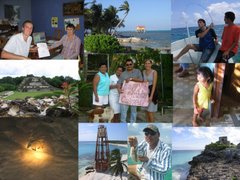
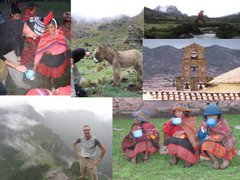
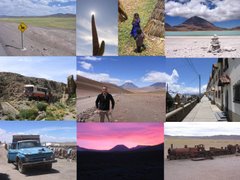
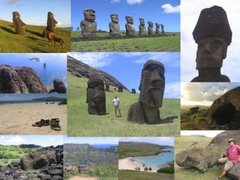
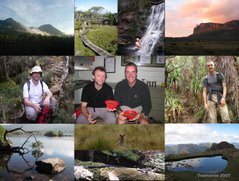
No comments:
Post a Comment